
|
||||||||||||||||||||||||||||||||||||||||||||||||||||||||||||||||||||
Une mitrailleuse est une arme dont toutes les séquences de ce tir sont automatiques afin de permettre un tir soutenu avec une cadence de tir importante. Les essais pour pouvoir tirer en rafale se heurtèrent à divers problèmes techniques et il faut attendre la Guerre de Sécession américaine en 1860 pour voir une première arme fiable apparaître dans la plus fameuse fut la Gatling les Français de leur coté essayent sans grand succès le canon mitrailleur Reffye . La guerre des Boers voit l'apparition pour la première fois des véritables mitrailleuses et nous voyons des le débuts la distinction entre les mitrailleuses légères pour appuyer les fantassins et les mitrailleuses lourdes défendant les positions fortifiées. La guerre Russo-Japonaise ne fit que confirmer cet état de fait. La 1° Guerre Mondiale vit une utilisation intensive de ces armes avec du coté français les Saint-Étienne et les Hochtkiss ,les Maxim du côté russe et allemand la Browning du coté américain (parvenu après la guerre) les Swarzlose du coté autrichien. Les Anglais et leurs alliés utilisèrent la Vickers 303 qui fait l'objet de cet article .
Historique.
Son développement fut long et tout est parti des études et projets de Hiram Maxim L'armée britannique avait employé avec succès une version de cette mitrailleuse dès la fin du XIXe siècle notamment lors de la guerre des Boers ou chaque bataillon d’infanterie fut doté d'une ou de deux sections. Mais les faibles performances de ces armes firent qu’elles furent pour un temps rejetées . Le problème ne venait toutefois que de l'affût à grandes roues qui était difficilement camouflable dans la brousse mais en 1908 un affût trépied lui fut substitué. En 1912 faces au regain de tension une version considérablement améliorée de cette mitrailleuse boit le jour . C’est la Vickers que nous connaissons La Vickers se différencie de la Maxim par un allégement de l’engin et surtout par une modification de la culasse mobile qui augmente notablement les propriétés mécaniques de l'arme c Cette arme n’est pas bien accueilli par l’Etat-major britannique , ce qui fait que l'armée britannique commença la Première Guerre Mondiale avec des armes antérieures à ce modèle la. Fonctionnement
Au point de vue proprement mécanique la mitrailleuse Vickers ressemble à la Maxim. L'énergie nécessaire étant produite par le recul aidé en cela par un renforcement de recul fixé à la bouche de l'arme. La culasse mobile est alors rejetée vers l'arrière et prélève une cartouche de la bande en tendant un ressort situé dans une boîte allongée sur le côté gauche de l'arme
Le ressort ramené ensuite la culasse mobile vers l'avant et le cycle se répète. Cette arme avait une grosse cadence de tir soutenu Toutefois le canon ne pouvait que tirer 10 000 coups environ à la cadence de 200 coups par minute après quoi les rainures s’usant la précision de l arme devenait aléatoire et il fallait changer de canon .Ce qui n’était pas un gros problème D’ailleurs le 24 août 1916 al 100° Compagnie du Machine Gun Corps a High Wood a assurer avec 10 Vickers un feu continue durant 12 heures afin d’arrêter tout contre attaque allemande . L'arme était refroidie par au à l'aide de manchon d'une contenance d'environ 4 litres. L’au commençait à bouillir après un tir prolongé de 3000 coups à la cadence de 200 coups/ minute Selon les conditions de tir et atmosphériques la perte était de ½ litre à 1 litre par 1000 coups . Aussi l’arme était munie d’un tube de condensation relié à un bidon d'environ 5 l . Ce bidon permettait de récupérer une quantité considérable d'eau grâce à la condensation ( ceci était très important dans le désert où l'eau était rare )
À titre anecdotique des histoires ont circulé en disant que les soldats tiraient des rafales pour pouvoir obtenir de l'eau chaude pour faire leur Thé.
Modèle de Vickers
cette arme fut utilisée par les britanniques et leurs alliés ainsi que Les États-Unis Il y eu plusieurs modèles de Vickers pas très différents les uns des autres certains avaient des manchons à rainures et d'autres lisses Production En Août 1914 Vickers produisait 12 mitrailleuses par semaine Devant la demande la production augmenta En 1915 Vickers avait livré 2405 MG Les chiffres retenus sont les suivant 1916 7429 1917 21782 et pour 1918 39473 mitrailleuses de produites . Le prix de vente avait été fixé à 175 £ chiffre qui tomba ensuite à 80 £ .La Vickers dans l Armée Britannique 1°)1912 - 1915 A son introduction en 1912 l’Armée Britannique utilisa cette arme dans le Bataillons d’infanterie au sein de section de Mitrailleuses . En parallèle des Motor MG Batteries ont été crées au sein de la Royal Field artillery rattachées aux Divisions en temps que force mobile en Février 1915 le nombre de mitrailleuses fut porte de 2 à 4 par section
2°1915 1922 Le 26 octobre 1915 voit la création du Machin Gun Corps avec une centralisation au sein des Brigades d’infanterie et de cavalerie de machine Gun Companies En 1918 voit l apparition de Machine Guns bataillions rattachés aux Divisions 3°)1922 1936 En 1922 le machine Gun corps est dissout et le matériel est reversé aux Machin gun Platoon des Bataillions d’Infanterie qui deviendra par la suite Machine Gun Company ou au Machine Gun squadron des Régiment de cavalerie 4°)1936 1945 La réorganisation de l Armée avec la motorisation touche les Machine gun Companies ou Squadroon . Plutôt que de former des unités indépendantes des régiments d’infanterie sont transformés en Divisional (machine Guns ) Bataillions ou en Divisional (Support ) bataillon rattachés au Divisions d’infanterie ou Blindées ainsi les régiments suivants furent transformés Cheshire Regiment 13th (Princess Louise’s Own Kensington London Regiment
Manchester Regiment
Middlesex Regiment
Royal Northumberland Fusiliers
Quelques bataillons d’infanterie réussirent a garder leurs Machine Gun Supports Companies mais c’étaient des unités spécialisées comme les régiments de parachutistes ou d’assault par air regroupés au sein des 1° et 6° Airborne Divisions 1st Airborne Division:
1st Bn The Border Regiment
2nd Bn South Staffordshire Regiment
7th Bn The King’s Own Scottish Borderers
6th Airborne Division:
1st Bn The Royal Ulster Rifles
2nd Bn The Oxfordshire and Buckinghamshire Light Infantry
12th Bn The Devonshire Regiment
Nous retrouvons les mêmes unités au sein des Motor Battalions des Armoured Brigades des Armoured Divisions et des Independent Armoured Brigades
Grenadiers Guard
Rifle Brigade
King Royal Rifle Corps
D’autres unités spéciales gardèrent pour la durée de la guerre leurs unités de Machine Guns
Reconnaissance Corps
Royal Marines et Army commandos
LRDG
SAS
Home Guard qui utilisera des MG Mk I ex Américains M1915 provenant des arsenaux AméricainsCes armes se différenciaient des Vickers normales avec des marquages à la peinture rouge apposés sur certaines parties de l'arme afin d'éviter de mettre la cartouche britannique 303
5°1945 1968 La fin du conflit entraîne la dissolution de nombreuses unités et les Unités de Mg n’échappent pas à la règle . Elles sont affectées dans des Supports companies au sein des Bataillions d’infanterie en tant que Machine Guns Platoons et ceci jusqu’en 1968 date du replacement de cette arme Les Principaux Utilisateurs Allemagne Récupération modèles capturé Australie Tous Modèles Belgique Mark 1 entre 1917 et 1918 Canada Tous Modèles France Mark I 2000 entre 1914 et 1916 en 8mm Lebel 6238 entre 1916 et 1917 802 en 1918 en calibre 11 mm Italie Mark I 890 MG Les Différents types de Vickers 303 Mark I ,II, III Iva ,IVb ,Vlh ,V rh VI et VII Les différents modèles diffèrent très peu les un des autres Fait d’armes
Le fait d’armes le plus marquant pour cette arme a été accompli par la 100th Company of the Machine Gun Corps a Bazentin le Petit au lieu dit les Hauts Bois entre Bazentin le petit et Bazentin le Grand le 24 Aout 1916 lorsque cette companie avec 10 Vicker a tire sans discontinuer pendant 12 heures sur un compartiment de terrain de 1820 mètres afin de bloquer toute contre attaque allemande pouvant mettre en peril une attaque britanique
Caractéristiques poids 15 kg / 23 kg Longueur 1,1 mm Longueur Canon 0.72 m Cartouche .303 British ( 7.7 mm) Cadence de tir 450 to 600 coups/min Portée Moyenne 740 m Portée Maximum 4,100 m tir indirect Alimenation 250 cartouches /cartouchieres Autres Photoscopes (Others Walk Around ) 1 2 3 4 The Vickers 303. A machine gun is a weapon which all the shooting sequences are automatic in order to allow a shot with a sustained rate of fire important. Tests to draw a gust were met with various technical problems and we must wait for the American Civil War in 1860 to see a reliable weapon first appear in the most famous was the French Gatling their side trying without much success barrel gunner Reffye. The Boer War saw the emergence for the first time real guns and we see the beginnings of the distinction between light machine guns to support infantry and heavy machine guns defending the fortified positions. The Russo-Japanese war did confirm that this state of affairs. The 1 ° World War saw an intensive use of these weapons with the french side Saint-Etienne and Hochtkiss, Maxim on the Russian side and the German Browning of the American side (arrived after the war) Swarzlose the Austrian side. The English and their allies used the Vickers 303 which is the subject of this article. History. Its development was long and everything is party studies and projects Hiram Maxim The British army had successfully used a version of this machine gun from the late nineteenth century, notably during the Boer War or each infantry battalion was equipped with one or two sections. But the weak performance of these weapons did they were for a time rejected. The problem was not, however, that the lookout for large wheels that was hardly camouflable in the bush but in 1908 a lookout tripod he was substituted. In 1912 faces the renewed tension considerably improved version of this machine gun drink the day. This is the Vickers that we know The Vickers differs from the Maxim by an easing of the equipment and especially by amending the bolt which significantly increases the mechanical properties of the weapon c This weapon is not well received by the State British staff, so that the British army started the First World War with weapons prior to this model. Functioning In point of view proper machinegun mechanical Vickers similar to Maxim. The energy required is produced by the decline helped by a strengthening of decline set at the mouth of the weapon. The bolt is then rejected backwards and levies a cartridge tape tending a spring located in a box lying on the left side of the weapon The spring back then bolt forward and the cycle repeats itself. This was a big weapon firing supported However, the canon could only draw about 10 000 rounds at a rate of 200 rounds per minute after which the grooves s'usant the accuracy of the weapon became uncertain and it had to change cannon. This which was not a big problem Besides August 24, 1916 al 100 ° Company of the Machine Gun Corps High Wood ensure Vickers with 10 fire continued for 12 hours to stop any attack against Germany. The weapon was cooled by using the sleeve of a capacity of about 4 liters. The began to boil after an extended firing of shots at the 3000 rate of 200 rounds per minute According to the fire conditions and weather the loss was a 1 ½ litre litre by 1000 coups. Also the weapon was fitted with a condensation tube connected to a canister of about 5 litres. This bogus allowed to recover a considerable amount of water through condensation (this was very important in the desert where water was scarce) As anecdotal stories have circulated saying that soldiers fired gusting to get hot water to make tea. Model Vickers this weapon was used by British and their allies as well as the USA There were several models Vickers not very different from each other some had sleeves with grooves and other smooth Production In August 1914 Vickers machine guns produced 12 per week in front of the calls for increased production in 1915 Vickers had delivered 2,405 MG The figures used are the following 1916 7429 1917 2178 2 and 1918 39473 machine-guns produced. The sale price was set at £ 175 figure which then fell to £ 80 . Vickers in the British Army 1°) 1912 - 1915 In his introduction in 1912 the British Army used this weapon in the infantry battalions within section Machine Guns. Along with MG Motor Batteries have been created within the Royal Field artillery attached to the divisions in time for a mobile force in February 1915 the number of machine guns was door 2 to 4 per section 2°) 1915 1922 On 26 October 1915 saw the creation of Machin Gun Corps with a centralized within the Brigades of infantry and cavalry Machine Gun Companies in 1918 saw the emergence of Machine Guns bataillions attached to Divisions 3°) 1922 1936 In 1922 the Machine Gun body is dissolved and the equipment is returned to the Machin gun Platoon of Bataillions Infantry, which will thereafter Machine Gun Company or the Machine Gun squadron of cavalry regiment 4°) 1936 1945 The reorganization of the Army with the engine affects Machine gun or Squadroon Companies. Rather than forming independent units of the infantry regiments are transformed into Divisional (Machine Guns) Bataillions or Divisional (Support) battalion attached to infantry divisions or Blindées and the following regiments were processed Cheshire Regiment 13th (Princess Louise's Own Regiment Kensington London Manchester Regiment Middlesex Regiment Royal Northumberland Fusiliers Some infantry battalions has managed to keep their Machine Gun Media Companies but they were specialized units such as parachute regiments or assault by air grouped within 1st and 6th Airborne Divisions 1st Airborne Division: 1st Bn The Border Regiment 2nd Bn South Staffordshire Regiment 7th Bn The King's Own Scottish Borderers 6th Airborne Division: 1st Bn The Royal Ulster Rifles 2nd Bn The Oxfordshire and Buckinghamshire Light Infantry 12th Bn The Devonshire Regiment We find the same units within Motor Battalions of Armoured Brigades Armoured Divisions and Independent Armoured Brigades Guard Grenadiers Rifle Brigade King Royal Rifle Corps Other special units remained for the duration of the war their units Machine Guns Reconnaissance Corps Royal Marines and Army commandos LRDG SAS Home Guard who use MG Mk I ex M1915 Americans from weapons arsenals These Americans were differentiated Vickers of normal markings with the red paint applied on certain parts of the weapon in order to avoid putting the cartridge British 303 5°)1945 1968 The end of the conflict leads to the dissolution of many units and units Mg are no exception. They are used in materials companies within Bataillions infantry as Machine Guns Platoons until 1968 and this replacement date of this weapon The Main Users Germany Recovery models captured Australia All Models Mark 1 Belgium between 1917 and 1918 Canada All Models France Mark I 2000 between 1914 and 1916 in 8mm Lebel 6238 between 1916 and 1917 802 in 1918 to 11 mm calibre Italy Mark I MG 890 The Different types of Vickers 303 Mark I, II, III Iva, IVb, Vlh, V rh VI and VII The various models differ very little another Incredible feats of arms
The most incredible feats of endurance was the action by the 100th Company of the Machine Gun Corps near Bazentin le petit et Bazentin le Grand at High Woods on August 24th 1916 This company had ten Vickers guns, and it was ordered to give sustained covering fire for 12 hours onto a selected area 2,000 yards away in order to prevent German troops forming up there for a counter-attack while a British attack was in progress
Technical data Weight 15 kg to 23 kg all-up Length 1,1 mm Barrel length 0.72 m Cartridge .303 British ( 7.7 mm) Action recoil with gas boost Rate of fire 450 to 600 round/min Effective range 740 m Maximum range 4,100 m indirect fire Feed system 250-round canvas belt
|
|
Droit d’auteur La plupart des photographies publiées sur ce site sont la propriété exclusive de © Claude Balmefrezol Elles peuvent être reproduites pour une utilisation personnelle, mais l’autorisation préalable de leur auteur est nécessaire pour être exploitées dans un autre cadre (site web publications etc) Les sources des autres documents et illustrations sont mentionnées quand elles sont connues. Si une de ces pièces est protégée et que sa présence dans ces pages pose problème, elle sera retirée sur simple demande. Principaux Collaborateurs:
Nb
de visiteurs:7064613 Nb
de visiteurs aujourd'hui:1215 Nb
de connectés:71 | ||||||||||||||||||||||||||||||||||||||||||||||||||||||||||||||||||





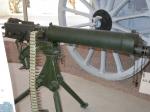
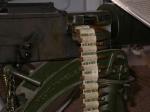
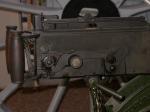
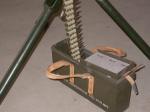
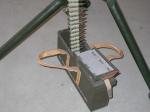
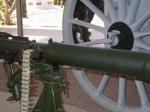
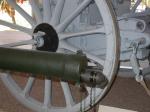
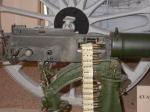
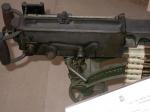
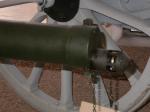
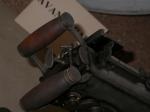
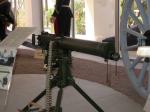
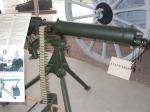
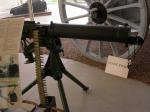
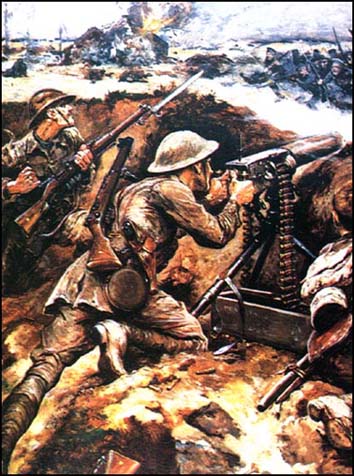
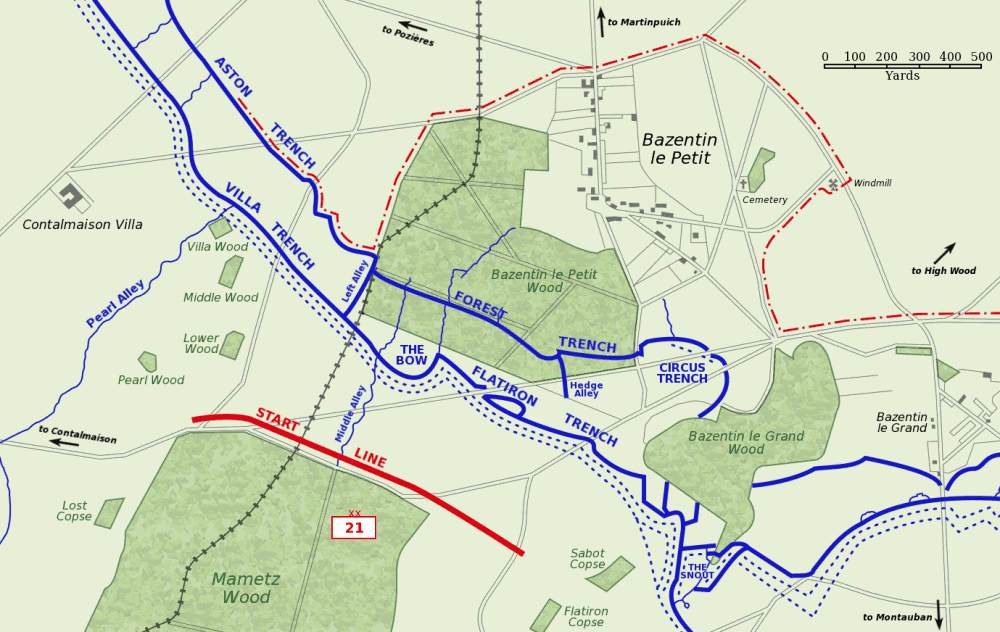


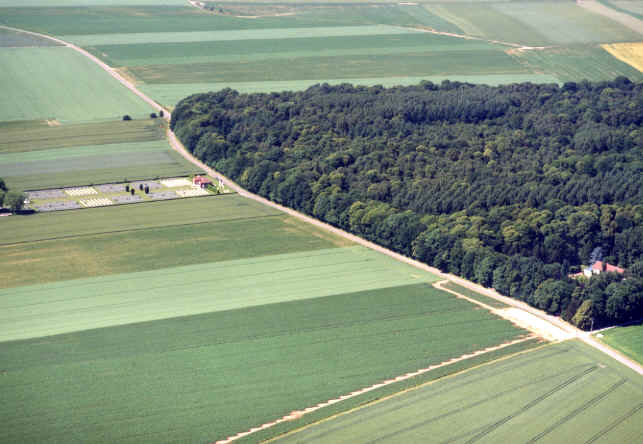
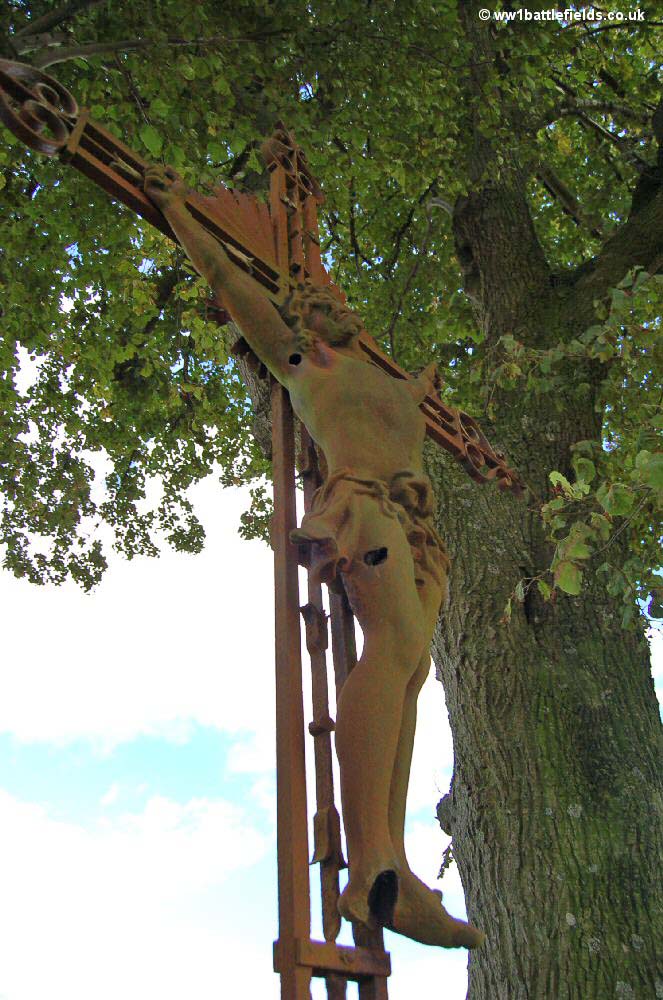
.jpg)